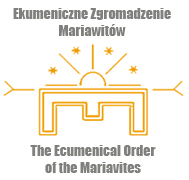Careful readers of our blog have undoubtedly noticed that from time to time we write about the community of the Moravian Brethren and its rich tradition. In several posts we referred to the Losungen, Biblical texts for each day of the year anually drew out in Herrnhut. We published also a longer text on the Holy Spirit in the theology of Unitas Fratrum founder, bishop Nicholas Zinzendorf. Our sympathy for them has many reasons, which we hardly have time to discuss here: from family connections, sympathy for the Pietism , to which spirituality they belong, to the conviction that Unitas’ tradition is one of the most interesting traditions within Protestantism. What is more, it has its roots in the time before Reformation. Through Hussitism , from which the Moravian Brethren descend, it is connected to an even older heritage – the tradition of the Slavonic rite in the Christianity of Central Europe that began with St. Cyril and Methodius’ mission. All the more pleased we were to learn that the full communion agreement between the Episcopal Church in the USA and the Moravian Brethren was officially inaugurated. The text below is a summary of the original report by the Episcopal News Service.
With an evening Eucharist Feb. 10 that blended elements of the liturgical and musical practices of both traditions, representatives of the Episcopal Church and the two provinces of the Moravian Church in North America formally inaugurated a full-communion relationship between the denominations.
The service at Central Moravian Church in downtown Bethlehem, Pennsylvania, the seat of the Moravian Church’s Northern Province, included a newly written Liturgy for Christian Unity from the Moravian Book of Worship and an Eucharistic prayer adapted from the 4th century liturgy attributed to St. Basil the Great (The Book of Common Prayer’s Eucharistic Prayer D).
In addition to the Eucharist itself, a focal point of the service came when the Episcopal Church bishops knelt before the participating Moravian bishops, who laid hands on them and prayed. The prayer, from the Episcopal Church’s “Enriching Our Worship,” was repeated by the Episcopal Church bishops as they laid hands on the kneeling Moravian bishops.
The prayers over the bishops were meant to symbolize the two denominations’ recognition and reconciliation of each other’s ordained ministers. This part of the liturgy, which began with the congregation reciting the Nicene Creed.
Churches in full communion formally recognize that they share essential doctrines, including baptism and Eucharist; agree to accept the service of each other’s clergy; and pledge to work together in evangelism and mission. The churches become interdependent while remaining autonomous.
In an explanation read during the Eucharist, the two denominations said that full communion is a “significant expression of the full visible unity of all Christians, which we do not yet discern but for which we pray.”
Presiding bishop of the Episcopal Church, Katharine Jefferts Schori, said the “visible witness of two different traditions coming together is a profound sign of the possibility of reconciliation to the world around us.”
The two churches began talking about full communion in 1997. The northern and southern Moravian provinces agreed in 2010 to enter into full communion with the Episcopal Church. The 76th General Convention voted in the summer of 2009 to be in such relationship
Among Moravians, the debate on the full communion was coloured by the issue on the full inclusion of gay, lesbian, bisexual and transgendered persons in the life and ministry of the church.
The Moravian Church does not allow ordained service by openly gay and lesbian members, but the church’s international body, the Unitas Fratrum , has said the issue is not a doctrinal matter.
The full-communion agreement with the Moravians is the newest of the Episcopal Church’s five such commitments. The Episcopal Church also is in full communion with the Evangelical Lutheran Church in America, the Old Catholic Churches of the Union of Utrecht, the Philippine Independent Church and the Mar Thoma Syrian Church of Malabar, India.
For a video report from the inaugural Eucharist, click here . A photo gallery is here .
The text of the full-communion agreement, officially known as “Finding Our Delight in the Lord: A Proposal for Full Communion Between The Episcopal Church; the Moravian Church-Northern Province; and the Moravian Church-Southern Province,” is here .
Source




